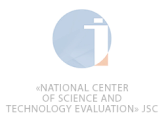АЛМАТЫ ҚАЛАСЫ ОНОМАСТИКАЛЫҚ КЕҢІСТІГІНІҢ ЖАҺАНДАНУ ЖАҒДАЙЫНДАҒЫ ТІЛДІК-ӘЛЕУМЕТТІК ДАМУ ҮДЕРІСІ
DOI:
How to Cite
Abstract
The process of globalization affects literally all spheres of public life of society, in which, undoubtedly, the protective mechanisms of the language are included, aimed at strengthening the national immunity of the language, strengthening the national identity of the state. The problem of language, including onomastics, is one of the strategically important areas of state policy. The article reveals semantic and word-forming features, quantitative and qualitative indicators of ergonyms as an important linguistic element that makes up the onomastic space of the Almaty city. These names require a comprehensive study, since they are an important factor that forms the linguistic, cultural and socio-ethical consciousness of the masses, residents and guests of the metropolis, foreign tourists, and also play an important role in the education of the younger generation. The study of the linguistic features of signage on the streets of the city,commercial enterprises, expressed in different languages as a result of the merger of many cultures and languages in the linguistic landscape of the city, will allow us to determine the modern cultural and social appearance of the metropolis, the quantitative and qualitative ratio of national content names, general directions of development. The positive influence of the globalization process can be called the fact that the onomastic names of Kazakhstan, including the onomasticon of the mega polis, are actively involved in the world, international information space. However, on the other hand, excessive Americanization, the tendency of Westernization, and the predominance of the English language weaken the mechanisms of nominating onomastic names in the state language; minimize the ethno-cultural component and the national content of the semantics of ergonyms. As a result of a comparative statistical analysis of the names of commercial enterprises (some shopping and entertainment complexes, business centers, restaurants, cafes), financial, educational institutions (banks, exchange offices, pawnshops and kindergartens), primarily attracting the attention of consumers on the streets of Almaty, the proportion of foreign-language names and ergonyms in the Kazakh language was revealed and comments were made. Recommendations on the ordering and coordination of urban onomastics for a more effective organization of the language space of the metropolis are given.
Key words: sociolinguistics, onomastics, onomastic space of the city, urbanonym, ergonym, naming, advertising language, speech culture.








